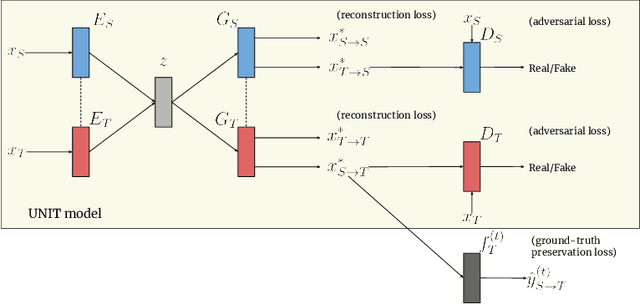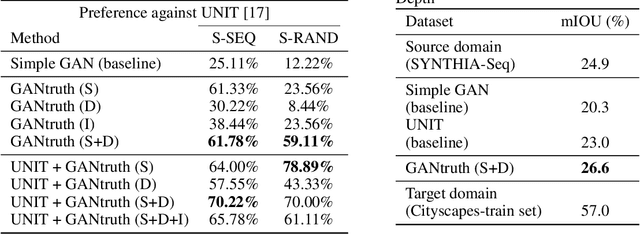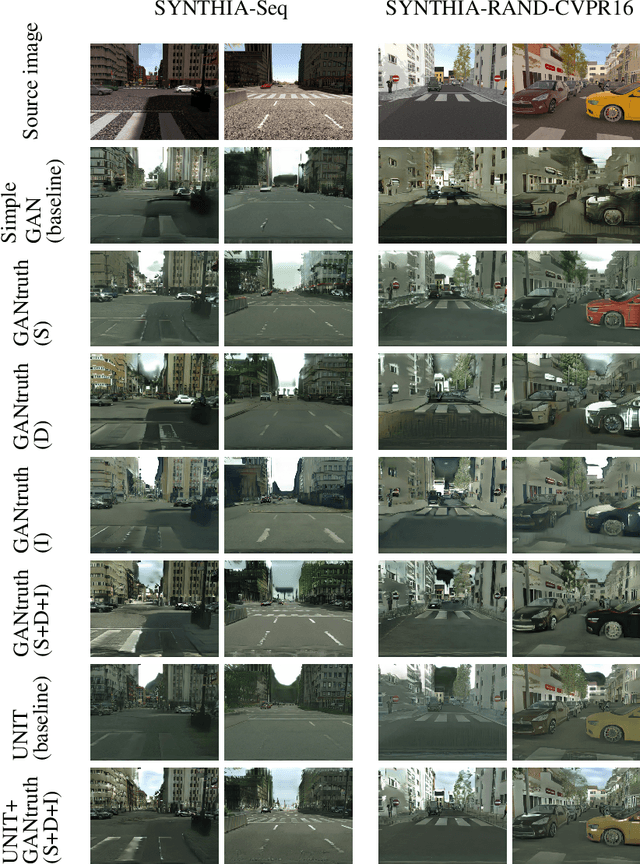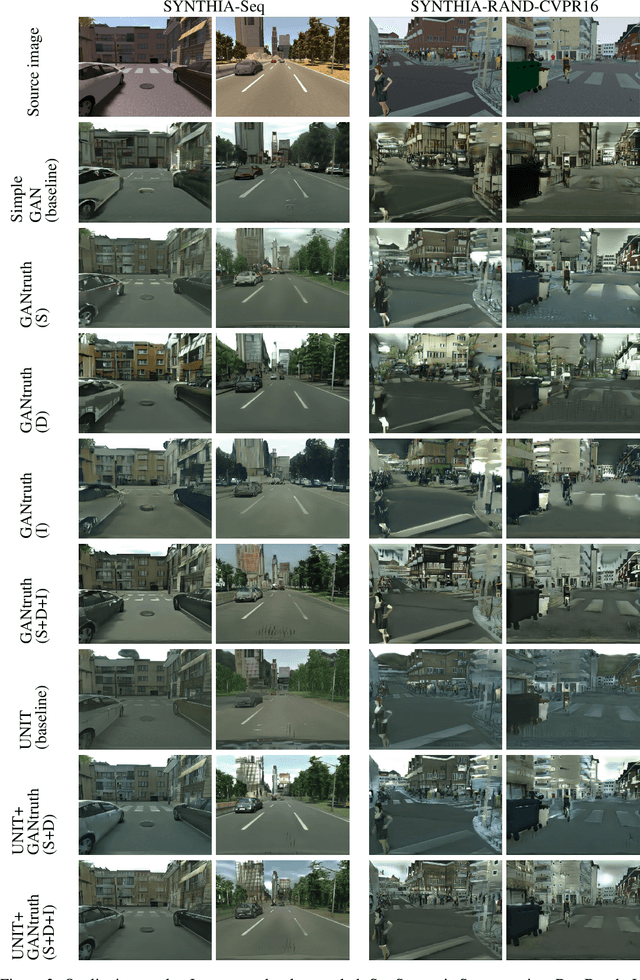GANtruth - an unpaired image-to-image translation method for driving scenarios
Paper and Code
Nov 26, 2018



Synthetic image translation has significant potentials in autonomous transportation systems. That is due to the expense of data collection and annotation as well as the unmanageable diversity of real-words situations. The main issue with unpaired image-to-image translation is the ill-posed nature of the problem. In this work, we propose a novel method for constraining the output space of unpaired image-to-image translation. We make the assumption that the environment of the source domain is known (e.g. synthetically generated), and we propose to explicitly enforce preservation of the ground-truth labels on the translated images. We experiment on preserving ground-truth information such as semantic segmentation, disparity, and instance segmentation. We show significant evidence that our method achieves improved performance over the state-of-the-art model of UNIT for translating images from SYNTHIA to Cityscapes. The generated images are perceived as more realistic in human surveys and outperforms UNIT when used in a domain adaptation scenario for semantic segmentation.
 Add to Chrome
Add to Chrome Add to Firefox
Add to Firefox Add to Edge
Add to Edge